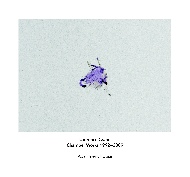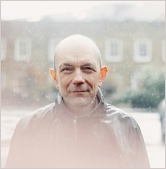Another Timbre TimHarrisonbre

at74x2 Laurence Crane - Chamber Works 1992 - 2009
Played by Apartment House
A double CD of chamber music by Laurence Crane.
Recordings supervised by the composer.
Recorded in Norwich, London and Huddersfield in autumn 2013.
CD 1:
1 Sparling (1992) youtube extract 5:36
Andrew Sparling - clarinet, Alan Thomas - guitar
2 Trio (1996) 5:50
Nancy Ruffer - bass flute, Andrew Sparling - clarinet, Philip Thomas - piano
3 Raimondas Rumsas (2002) 5:48
Anton Lukoszevieze - cello
4-5 See Our Lake (1999) 6:23
Nancy Ruffer (flute), Andrew Sparling (clarinets), Gordon MacKay (violin),
Anton Lukoszevieze (cello), Simon Limbrick (vibraphone)
6 Sparling (1992) 5:21
Andrew Sparling (clarinet), Philip Thomas (piano)
7 Riis (1996) 10:12
Andrew Sparling (clarinet), Anton Lukoszevieze (cello), Sarah Walker (electric organ)
8 Bobby J (1999) 8:23
Alan Thomas (electric guitar)
9 Sparling 2000 (2000) 6:13
Andrew Sparling (clarinet), Ruth Ehrlich & Angharad Davies (violins), Hilary Sturt
(viola), Anton Lukoszevieze (cello)
10-12 Estonia (2001) 12:05
Andrew Sparling (clarinet), Nancy Ruffer (flute), Gordon MacKay (violin),
Anton Lukoszevieze (cello)
CD 2:
1-7 Seven Short Pieces (2004) youtube extract 10:42
Nancy Ruffer (flutes), Andrew Sparling (clarinet), Gordon MacKay (violin), Anton Lukoszevieze (cello), Philip Thomas (piano)
8 Piano Piece No.23 - Ethiopian Distance Runners (2009) 21:54
Philip Thomas (piano)
9-12 Four Miniatures (2003) 8:13
Nancy Ruffer (flute), Gordon MacKay (violin), Simon Limbrick (percussion)
Philip Thomas (piano)
13 Come back to the old specimen cabinet John Vigani, John Vigani
Part 1 (2007) 11:13
Andrew Sparling (clarinet), Laurence Crane (auxiliary instruments)
14 John White in Berlin (2003) youtube extract 13:29
Anton Lukoszevieze (cello), Simon Limbrick (percussion), Alan Thomas
(electric guitar), Philip Thomas (piano)
Less Than Normal
by Michael Pisaro
One of the several mysteries of Laurence Crane’s music is how its apparently normalised structure subverts itself. This is often music of tonal harmony and four bar phrases – and, for the most part standard classical instrumentation. It never goes on too long. It is hardly ever abrupt or unexpected. Logical. Clear. Orderly. Quiet. Yet it is also, to my ears, quietly crazy, even absurd in its extremely understated way.
It would not surprise me if someone hearing the music for the first time would say something like, “It sounds like ordinary music.” This ordinariness is right there on the surface. But if I have learned anything from Laurence’s music it is that “the ordinary is not.” I’ve also never run into anyone who knew his music who thought it was as simple as it appeared. Why is that?
There are the titles. Andrew Renton Becomes An International Art Critic. Derridas. Ethiopian Distance Runners. and so on, embedded into the more mundane sounding ones. Pieces are sometimes named after people: Erki Nool, Raimondas Rumsas. Bobby J. – and it does seem to me that the titles name the pieces in ways that are more than humorous or droll. They are like the way people are named. Gradually the music comes to fit its name.
When I play a Crane piece for the guitar or the piano, I start to feel that the most basic features of tonality become something like a fetish. A major chord in 2nd inversion, a suspension, or a simple movement in voice leading: those things that most composers of our age learned at the very beginning of our training. They have the fascination of a raw material, but we were encouraged to move along past them, not to dwell on such apparently simple objects. However when you look at them closely, under the microscopes of isolation and repetition, such things can seem to be the real miracles of music. The machinery that makes the 2nd inversion chord unstable always works; it is so infallible that it borders on comedy. Laurence’s music, for all its good humor, also has a sense of awe for those small mechanics.
In a way, they are a little like readymades. The individual elements in the abstract can usually be found somewhere else. And it seems to me that Laurence takes great pleasure in making the distance between a tonal cliché and the material used in his piece as small as possible. (An aesthetic of inserting a molecule of foreign substance into the flour, water, yeast and salt.) But this very slight twist that Crane gives in voicing or instrumentation – or simply the placement of an element, is enough to render the commonplace odd; or to return it to its original, inexplicable and much greater oddity.
The work does not invite interpretation by the listener by involving her in complexities to resolve. It demands to be broken open. It exhibits what Reza Negarestani has called “a rigorous and twisted mode of closure.” Hermetic and a bit distant, with a beauty fragile enough that one is afraid to get close – calling up (once again) an artist who to me seems like the odd uncle to Crane: Marcel Duchamp. The airtight container that gets punctured briefly any time one chooses to listen; but only to be resealed, just as fresh, for the next time. It laconically refuses to give anything away.
This is not minimalism. It does not take justification in “less is more” or “only what is necessary”. It takes us beyond those points: it is less than necessary. It says, basically, nothing is necessary. And perhaps, also, “let’s be happy with this.”
Michael Pisaro (December 2013/February 2014)

Photograph: Benjamin McMahon / The Wire
The Unwonted Beauty of Laurence Crane’s Chamber Works 1992-2009
by Jesse Goin
Clarity
In the sense of transparence,
I don’t mean that much can be explained.
George Oppen, “Of Being Numerous (1-22)”
I offer a few lines of my favorite Objectivist poet advisedly – in these few lines I find as fine a distillation of what composer Laurence Crane is up to in this generous and overdue constellation of chamber works as any I might manage. These pieces are kindled with an adamantine clarity and transparency, the sort of blue fire rarely heard in contemporary composition outside of the Wandelweiser collective.
But then there is Oppen’s last admonitory line, and its aptness to Crane’s work is perfect - anyone who is struck, as I was immediately upon hearing my first Crane composition last year, by the embarrassment of harmonic beauty and architectural rigour throughout these works, will soon sense another, recondite quality to the music. Composer Michael Pisaro refers to this quality as “quietly crazy”, owning a beauty that is “hermetic” and “fragile.” Contained within Crane’s elemental materials there is much that cannot be explained, something necessitating that I use that often inappositely used word, ineffable. I find the suchness of Crane’s music eludes explanation despite immersion and repetition; this is unusual in my experience. However much I might welter and flail when setting out to write about many of Crane’s contemporaries, there eventually comes some sort of hook on which to hang a few ideas. I have lost track of how many times I have heard these mainly miniature-scaled pieces, and yet I cannot tell you precisely why I agree with Pisaro that this is music at once subversive and ordinary, recalcitrant and inviting, frugal, even abstemious, yet sounding like a gift offering generous clarity and transparence. Experienced this way, Crane’s compositions are koans, another model of concision and clarity, where both conceptual rigor and poesy rule, contradictions and dualities obtain, and the listener, confronted with all this, is invited to, essentially, get over it.
The chamber works are not without occasionally distinct referents, even seeming melodic and harmonic echoes, however transitory – I hear Feldman, Satie, Peter Garland, Thomas de Hartmann’s Gurdjieff works, reaching way back, Early Music, and, most saliently, Howard Skempton, who inspired Crane to compose music based in tonality. His transparence, to return to one of Oppen’s bare-bone qualities, is manifested in these intermittent evocations of his predecessors. “I take to my room and let small things evolve slowly,” Satie said. Crane has done so as well, outside of any spotlight, with only a few available releases of his work, prior to this one.
Crane is most rigorous in subtracting any elements in a piece that might obstruct the direct experience of the ineffable; in this way his music owns a humility that brings to mind for me Jürg Frey, whom Crane apparently admires a great deal. There is humility in how improbably patient Crane is in his rhythmic and harmonic development. There is humility in the melding of sly humour and rigorous beauty, especially in the piano works. There is humility in Crane’s fealty to the most basic elements of composition, coupled with their raw and rigorous repurposing, that has clarified his work since at least 1992.
It was in 1995 that Crane began his association with the ensemble Apartment House, whose core members are heard on this recording. For all I have said about the ineffable nature of this music, a few meat-and-potato observations: Crane likes the clarinet – only five of the pieces in this collection are sans clarinet, three of those being for other solo instrumentation (piano, cello and electric guitar, respectively); Crane likes Andrew Sparling on the clarinet – the pieces bearing his name, Sparling (two iterations) and Sparling 2000, serve beautifully as a spine for the first disc - they are programmed at the beginning, middle, and second-to-last place on disc one, the clarinet sounding a sort of simple dawn chorus, with each iteration shaded and colored variously by Sparling’s accompanists; there is no fast music; Crane, like Satie and Feldman, enjoys a wacky song title, e.g., I Saw Alexander Bălănescu In Safeways; and, as I have said, Crane holds a long, loving regard for the first principles of tonal music.
What can I add to clarify how I hear the unwonted beauty of Crane’s work found here? I heartily recommend, of course, that you live with it a while, available to the koan encased in its simple attractions. Crane’s chamber works, stripped bare and being of two realms – the implacably logical and the ineffable – endlessly moves these two
realms close together and far apart, music at once clear, transparent, explaining nothing.
This is a remarkable achievement, and my thanks goes to the Apartment House ensemble for its impeccable musicianship, Another Timbre’s Simon Reynell for his patient work in bringing this release to fruition, and, of course, to Laurence Crane, whose music has been an environment I have spent considerable time in lately, one that has changed me.
Jesse Goin from his blog ‘Crow with No Mouth’, June 2014
For a long interview with Laurence Crane go here
Below are two texts on Laurence Crane’s music by
Michael Pisaro and Jesse Goin